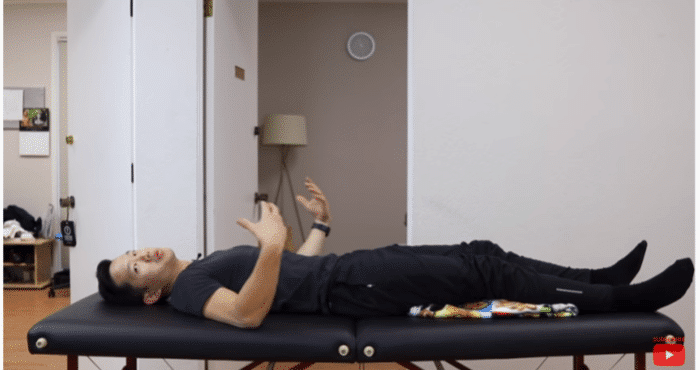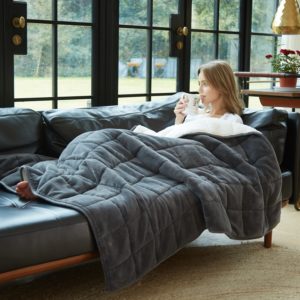
Chronic back pain is the name, and ignoring it is your game.
Let’s look at the main causes of chronic back pain:

Tired of taking pain relievers?
Tired of trying a new stretch every other week?
You’ve tried every exercise and nothing really works. You’ve seen your doctor, but they can’t give you an exact diagnosis. They’ve sent you to a back specialist.
Do you want back pain forever? Probably not.
This is always the recommended route to take when trying to get a solution to a physical problem that has been affecting you for a while.
According to healthcare professionals (specifically the ones over at www.hopkinsmedicine.org) pain should be considered chronic if it lasts 3 months or more.
Because lower back pain is so common most of us adjust to living with it – myself included for a long time possibly 4 or so years – I just ignored the pain, or tried to avoid “activating” it by standing or sitting in specific positions.
If this sounds like you, then you’re also likely to be interested in non-invasive methods because surgery just seems like too much to deal with.
It is strongly recommended you try as many non-invasive methods as possible before trying to deal with it with it through medication or surgery, however for those dealing with serious back problems and cannot walk or do anything without experiencing serious pain, please go and get checked out by a professional.
Here, we start with the simple and overlooked methods as they’re not widely known, but can have benefits lasting a lifetime.
What we try to prioritise on this site are low maintenance strategies that allow you to deal with everyday problems without too much effort, for example commitment to a workout routine and changes in the diet will require more effort and these solutions can be used in conjunction with low maintenance methods.
Before outlining these methods, let’s quickly run through the structural causes of back pain which these methods can resolve.
Sedentary Lifestyle
– cannot stress this one enough. This leads into a weak core. Sedentary lifestyles mean the abs (core) lack activation especially if we sit down all day. This in turn leads to tight hamstrings, weak glutes and an array of other structural issues.
Bad form – Strength training/heavy lifting without stretching
– in a way this is the reverse of the weak core situation, as muscles get stringer but further imbalanced. Below methods tend to take the pressure off of the joints and bones which are used for training.
Pillow Under The Knee
We discovered this one in 2019 (though many people have been doing it for years), while going through some great YouTube channels dedicated to back pain relief. This is a game-changer.

How can something so simple be so effective you ask? I’ll tell you. This takes some time to get used to and it is most definitely not easy – simple, but not easy.
The Science Behind The Pillow
Check this video which details how to relieve chronic back pain.
The elevation by putting an object underneath your knees while you sleep serves to put the weight of gravity on to your lower spine, from the stomach area. This helps to decrease the arch in your spine over time, as an increased arch is one of the early signs of oncoming or present back pain – and if were being honest its not the most flattering posture to have.

Courtesy of http://www.swolept.com
You will soon find out what makes this a little bit of a struggle – if you’re what’s known as a “side-sleeper” you’ll quickly see how uncomfortable it can be to sleep facing up. I personally struggled to adjust to this for a few days and got very little actual sleep on the first night. I can tell you that after a week of adjusting by force, it was well worth the hassle. Hard work pays off.
As you can see in the above video, you don’t necessarily need to use a pillow. You can use a rolled up piece of fabric like a blanket that you don’t use while sleeping – one of our weighted blankets has multiple uses and the added weight will ensure doesn’t move around significantly during sleep!
Stretching
Yes you would claim to have tried many stretches and many times on top of that. The fact is, stretching is going to be your best bet – when done properly.
When it comes to stretching out the back pain they key is consistency. How many of you can say you kept a steady routine of stretches over the course of 30 days?
Combining specific stretches with a workout routine will do wonders for your back and body posture in general.
My particular pain was chronic lower back pain, and you can see the exact stretches I used to alleviate the pain right here.
Sleeping Remedies
Sleeping On The Floor
Theory behind this method:
The flat surface of the bare ground combined with the solid texture helps to alleviate pain points by keeping the skeletal structure aligned, rather than adjusting the contours one creates when they unconsciously rotate while they sleep. It reduces pressure points against the ground, by promoting a neutral body posture when lying down.
Physiotherapist Michael Tetley says “kickback” from the ribs to the spine when sleeping on the ground provides a natural adjustment each night to keep the back functioning properly.”
Sleeping on the floor has been linked to lead to improved blood circulation and spinal health and even increased brain functionality.
Although studies are not as myth-busting as we would like them to be, the truth is it is a case by case basis and not something you should write off before trying it. To put it simply, sleeping on a hard surface might just change your life.
It’s not even as uncomfortable as it might sound. Similarly to the pillow-under-the-knee tactic described earlier, you’d be hard pressed to find a solution more natural and quite frankly, as cheap as sleeping on the floor.
Check this table below.

When Not to Sleep on the Floor:
- You are of an advanced age group
- You are a “cold sleeper” (You find it uncomfortable to sleep on cold surfaces) however you may find the use of a thick blanket counteracts this
- You’ve confirmed you have a serious medical condition.
Final Thoughts
These are some of your options when trying to reduce the chronic pain that can arise from sitting for long periods and a generally sedentary lifestyle. Always seek the advice of a qualified professional, but by implementing low maintenance practices, such as simply placing something underneath the knees, you build better habits that require little effort from you once you adjust to them.





